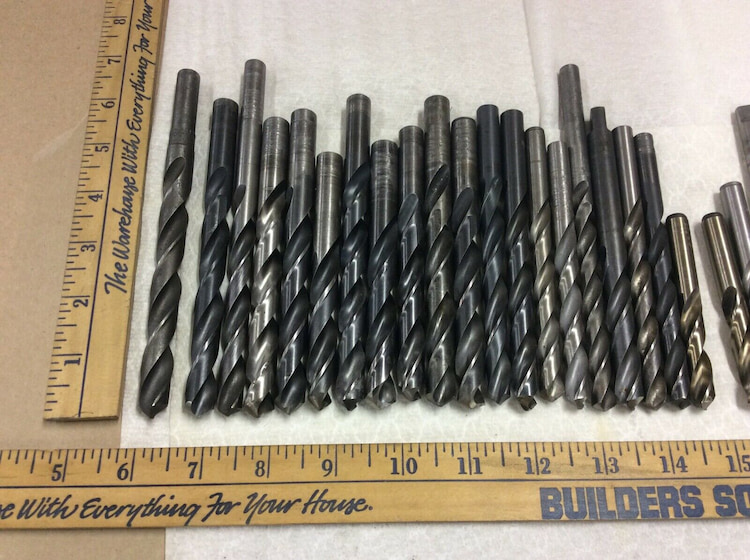Having the right tool accessories is just as important as having the right tools to begin with. You can’t use one without the other. For saws it’s the right blades, and for drills, the right drill bits for the job at hand. Drill bits are designed to drill holes into a range of materials, from wood and concrete, to metals, plastic and ceramics.
Choosing the bit you need depends on the type of drill you have, as well as the desired width and length of the hole and the material you’ll be drilling into. It also depends on the materials of which the bits are made. This largely determines whether the bits are up to the task and how long they last. Sourcing quality bits from local suppliers helps in getting the job done faster and with the least effort.
One of Australia’s leading brands in this respect are Alpha drill bits. They are part of the esteemed Sheffield Group that produce an extensive range of tools and tool accessories both in Australia and abroad. The Alpha Gold Series drills and ThunderZone impact drill bits are some of their better-known lines.
The Gold Series Alpha drill bits consists of the popular Jobber drill bits, Long and Extra Long Series bits, Panel and Stub drills, Reduced Shank Drills, and Cobalt drill bits. They are the go-to choice for all trade and industrial applications, and their unique combination of materials, coatings, hardening processes and edge designs allows for faster drill bits that also last longer.
What are ‘Jobber’ Drill Bits?

If you’re the regular bloke who gets the first set of drills he sees, you might not be familiar with what jobber drill bits exactly are. Basically, there are two types of drill bits when it comes to the length – jobber and mechanics drill bits. Jobber bits are typically longer with overall lengths coming in at 8 to 14 times that of the diameter. This makes them suitable for a range of tasks, especially where shorter drill bits just don’t make the cut.
Choosing the Drill Bit for Your Application

The wide range of drill bits may be confusing, but the sheer variety is there to make drilling easier and more precise. We see that bits can differ in length, but also what they’re made of and how they’re designed. This means one type of drill bit will be better suited than another for a particular job.
Materials

What the drill bits are made of determines drilling speed and where they can be used. It also determines the price. Possibly the most widespread are HSS (high-speed steel) drill bits. These are versatile with good strength and a low price. They’re good for wood and thinner pieces of metal. If you’re constantly drilling into tougher and thicker materials, then you might want to look into carbon and cobalt steel bits.
Both types have better heat and friction resistance, so they hold up better in more demanding tasks. Next up you have the drill bits made of tool steel with tungsten carbide tips (TCT) and superior strength. This makes them ideal for drilling into stone, concrete, brick, tiles, and ceramics and here they’ll last longer than regular HSS bits.
The bits are most often coated. Black and ferrous oxide coatings resist corrosion, heat buildup and metal fatigue and retain applied lubricants longer, making these bits better in drilling ferrous metals, like steel and iron. Non-ferrous metals, such as aluminium benefit from titanium nitrate coatings. For the hardest strength, look for Alpha drill bits with synthetic or natural diamond coatings, as these can basically drill into almost any type of materials and to any depth.
Drill Bit Types
There are dozens of bits according to application and design. Twist drill bits are the ones that are most associated with drilling and are versatile all-rounders. Step drill bits are conically shaped and have “steps” or cutting edges in increasing width, allowing for differently sized holes, most often in sheet metals. Auger bits have specifically designed flutes that make them useful in drilling into wood, ice, or soil.
Spade bits have tips resembling spades and are good for cutting into softer woods in carpentry and electrical jobs. Installer bits are used for wiring applications, masonry bits for larger holes in stone, brick, and concrete, and hole saws for creating wider holes in wood. Left hand bits spin counterclockwise and are used for fastener removal and countersink bits for flush finishes. You’ll find the right bit for any job imaginable.
There are also bits for general use in wood, metals, or plastics. They have differently designed tips in terms of point angles, the number of cutting edges and the shape of the shaft. Some will create pilot holes for easier drilling, while others create cleaner holes with flutes designed for better material removal.
Bits also vary according to the shank, with hex, cylindrical and SDS shanks being the most common types. The shape of the shank determines the type of drills the bits can fit. Cylindrical bits fit drills with adjustable round chucks, hex bits fit impact drivers, and SDS bits are for SDS and hammer drills.
Sizing and Buying
Drill bits come in a variety of diameters and detailed size charts help in getting the best results and in choosing the right sized bit. Drill bits are either sold separately or in packages consisting of several differently sized bits. Larger combo sets and drill bit packs for heavy-duty use often come with their own carry case.

